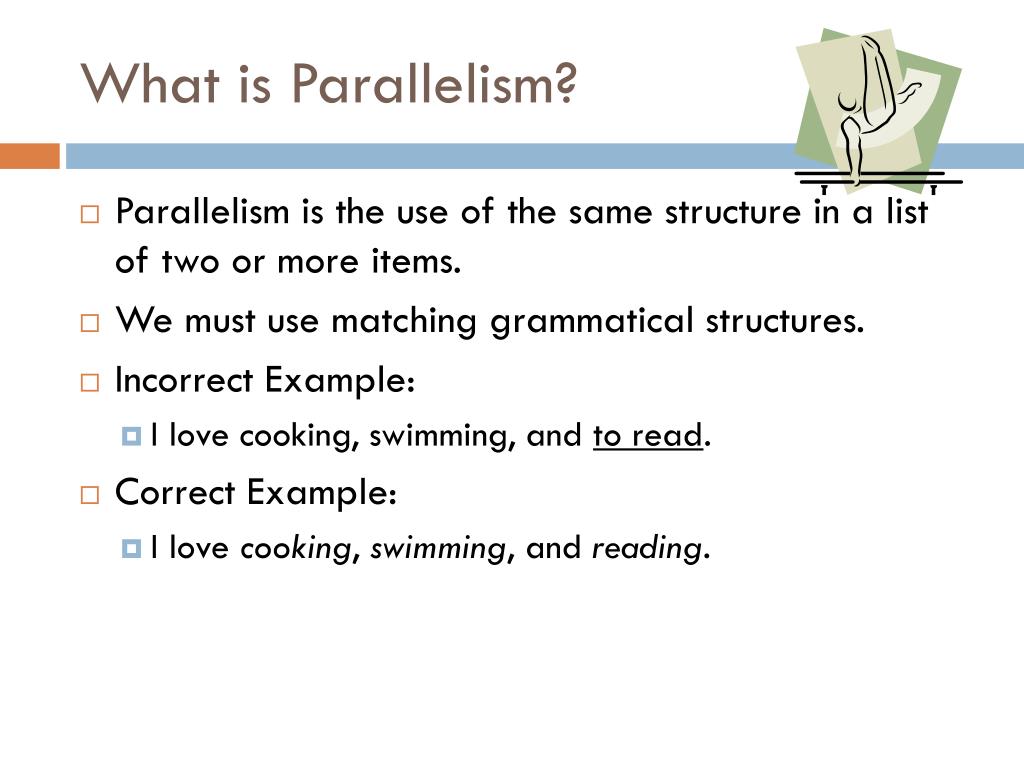
In antitheses, two elements of a sentence are placed in contrast to one another. One literary device that often makes use of parallelism is antithesis. It's useful to know what these other terms mean, since technically speaking they are specific types of parallelism.

Put another way: there are a number of figures of speech that make use of parallelism in specific ways. While parallelism is itself a figure of speech, it can also be seen as a kind of "umbrella" category of a number of different figures of speech. Parallelism and Related Figures of Speech Writers use parallel grammatical elements within one sentence or, more broadly, between and among different sentences in a paragraph, for effect: to emphasize ideas or themes, suggest connections, or highlight contrasts, all while adding rhythm to the structure of their expression.

In contrast to the strictly grammatical view of parallelism, in rhetoric and literature parallelism can do much more than just create a pleasing and grammatical sentence structure.
#Parallel definition how to#
Here's how to pronounce parallelism: par-uh-lel-iz-em Parallelism in Grammar vs.

Teach a man to fish, and you feed him for a lifetime." The grammatical structures of the first and second sentences parallel each other. The following well-known adage is an example of parallelism: "Give a man a fish, and you feed him for a day. These "parallel" elements can be used to intensify the rhythm of language, or to draw a comparison, emphasize, or elaborate on an idea.

#Parallel definition series#
Parallelism is a figure of speech in which two or more elements of a sentence (or series of sentences) have the same grammatical structure. What is parallelism? Here’s a quick and simple definition:


 0 kommentar(er)
0 kommentar(er)
